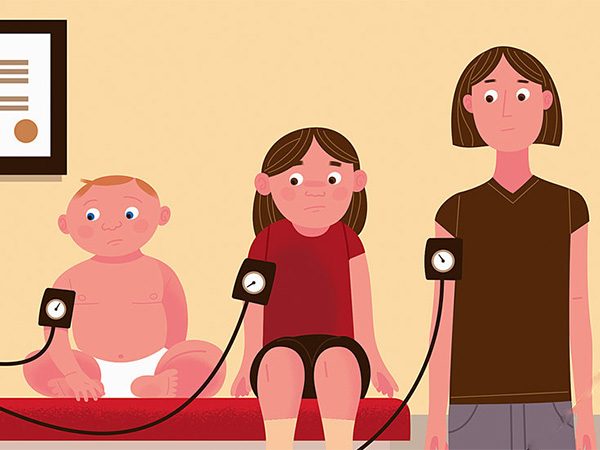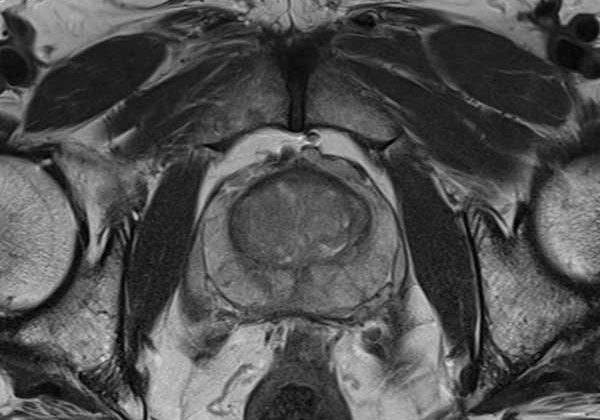Kids with white-coat hypertension might be at risk for eventual progression to sustained high blood pressure
Children and adolescents diagnosed with white-coat hypertension, a condition where blood pressure is higher when at the doctor’s office, might eventually progress to sustained hypertension, according to a new study. Researchers say it’s important to take white-coat hypertension in kids seriously, and to establish follow-up evaluation with health care professionals and potentially with at-home blood pressuring monitoring. A second study found that combinations of heart disease risk factors can predict heart damage in kids and indicates a need for early diagnosis and lifestyle modifications to reduce the risk.
Children and adolescents diagnosed with white coat hypertension might be at risk for eventual progression to sustained hypertension and should be monitored regularly, according to new research presented at the virtual American Heart Association’s Hypertension 2020 Scientific Sessions.
White-coat hypertension is a condition that occurs when a person’s blood pressure tends to increase only when they’re at the doctor’s office. While there is a good amount of data on adults with white-coat hypertension, not much is known about what happens to kids with this condition.
“Hypertension is becoming more common in pediatrics and this has followed the increasing trend of obesity in kids,” said study author Yosuke Miyashita, M.D., M.P.H., assistant professor of pediatrics at the University of Pittsburgh School of Medicine. “There is data to suggest that adults with white-coat hypertension may be at a higher risk for an eventual diagnosis of hypertension, and they may be at an intermediate risk for a cardiovascular event such as a heart attack. We don’t know if this is the case among children. This is the first study in pediatrics, that I’m aware of, to examine if white-coat hypertension in kids progresses to sustained hypertension.”
Miyashita and colleagues studied 101 children whose average age was 14 years. Doctors had initially diagnosed these children with white-coat hypertension because their blood pressures were abnormally high in the doctors’ offices but normal with ambulatory blood pressure monitoring (ABPM), when the children were monitored at home for 24 hours while wearing a special blood pressure measuring device.
At an average of one year later, these children were monitored with the same at-home device. Researchers found that 18% of the children had their ABPM diagnosis changed to hypertension and 32% had changed to prehypertension, according to pediatric ABPM guidelines.
“Approximately half of the kids with an initial white-coat hypertension diagnosis changed to an abnormal ambulatory blood pressure monitoring diagnosis at the follow-up,” Miyashita said. “This tells pediatricians and families that perhaps the diagnosis of white-coat hypertension is not as benign as previously thought and these kids should continue to be carefully monitored. Larger prospective studies on children are needed to confirm this finding.”
Controlling risk factors can reduce heart damage in teens
In another study presented at the meeting, researchers found adolescents are at risk for heart damage at young ages if they have a combination ofheart disease risk factors. They demonstrated that the risk of damage increased significantly with the number of risk factors presents.
Researchers analyzed health information and calculated the cardiovascular risk score of 379 teens, average 15 years old, 60% male. For each of these heart disease risk indicators, one point was added: low-density lipoprotein cholesterol higher than 155 mg/dL, or high-density lipoprotein lower than 40 mg/dL, or triglycerides higher than 150 mg/dL; body mass index higher than 95%; fasting glucose higher than 100 mg/dL; and HOMA-IR, which is a measure of insulin resistance >2.5.
They found that a higher cardiovascular risk score was linked to an increased risk for children having enlarged and thicker walls of the heart’s main pumping chamber, the left ventricle and stiffer arteries.
Researchers said the presence of cardiovascular risk factors in adolescence can predict heart damage at a young age. Identifying these risks early and making lifestyle modifications or other changes could potentially prevent or reduce the progression of heart disease in kids.
Source: American Heart Association
Full bibliographic information
American Heart Association Hypertension Scientific Sessions 2020 – September 10–13, 2020
Abstract Title: White Coat Hypertension Stability In Children And Adolescents: Pediatric Nephrology Research Consortium Study





